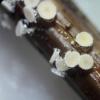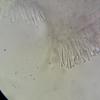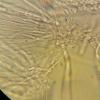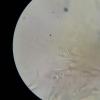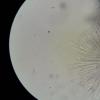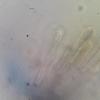
08-06-2020 07:01
Juuso ÄikäsI found these on a piece of dead Equisetum (fluvia

01-06-2020 16:39
 Andgelo Mombert
Andgelo Mombert
Bonjour, Un dernier pour aujourd'hui. Sur tige m

18-02-2017 20:37
 Stephen Martin Mifsud
Stephen Martin Mifsud
Hi, I found clusters of amber=yellow discoid ascom

29-05-2017 12:45
 Stephen Martin Mifsud
Stephen Martin Mifsud
I am reposting the finding of a Cosmospora species

06-06-2020 20:25
Juuso ÄikäsI know next to nothing about these kinds of fungi
Lachnum
Robin Pétermann,
06-06-2020 17:17
 J'ai également trouvé ce Lachnum sur Filipendula. Les asques ont des crochets à la base et mesurent 50-65 ?m de long. Les paraphyses sont lancéolées. Les spores sont hyalines et mesurent 9,5-15 x 2 ?m. Lachnum nudipes me semble être un bon candidat. Je lis qu'il est fréquent sur cette plante. Y est-il strictement lié ? Si oui, d'autres espèces du genre peuvent-elles venir sur le même substrat ?
J'ai également trouvé ce Lachnum sur Filipendula. Les asques ont des crochets à la base et mesurent 50-65 ?m de long. Les paraphyses sont lancéolées. Les spores sont hyalines et mesurent 9,5-15 x 2 ?m. Lachnum nudipes me semble être un bon candidat. Je lis qu'il est fréquent sur cette plante. Y est-il strictement lié ? Si oui, d'autres espèces du genre peuvent-elles venir sur le même substrat ?
Hans-Otto Baral,
06-06-2020 20:37

Re : Lachnum
It seems there are croziers, though I do not see it clearly. First you must verify whether there are crystals among the hairs. A closeup of the hairs would be welcome.
The only alternative to probable L. nudipes (which has croziers) is the little known L. morthieri but your large spore measurements exclude this.
Zotto
Robin Pétermann,
08-06-2020 18:01
Mirek Gryc,
08-06-2020 20:20
Re : Lachnum
Hi Robin
I suspect that Zotto wanted more to see crystals and not hair.
To be sure that it is L. nudipes, the presence of crystals must be stated.
Look at my site, pictures number 02 and 06 (at the bottom of the page).
http://grzyby-pk.pl/gat_l/gat_lachnum_nudipes.php
Without the presence of crystals it cannot be confirmed that it is this species.
Mirek
I suspect that Zotto wanted more to see crystals and not hair.
To be sure that it is L. nudipes, the presence of crystals must be stated.
Look at my site, pictures number 02 and 06 (at the bottom of the page).
http://grzyby-pk.pl/gat_l/gat_lachnum_nudipes.php
Without the presence of crystals it cannot be confirmed that it is this species.
Mirek

